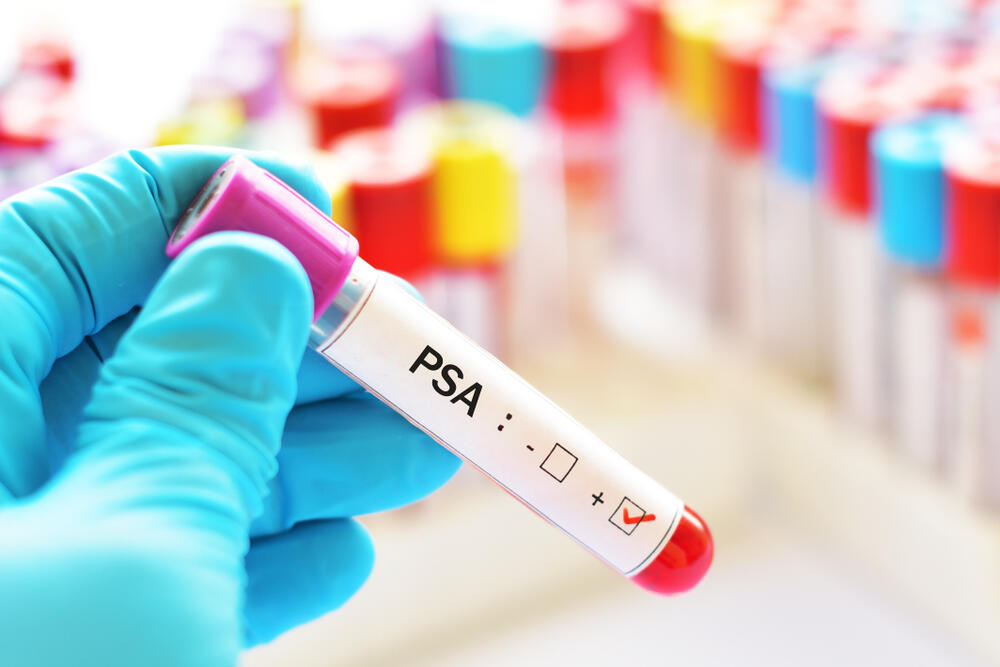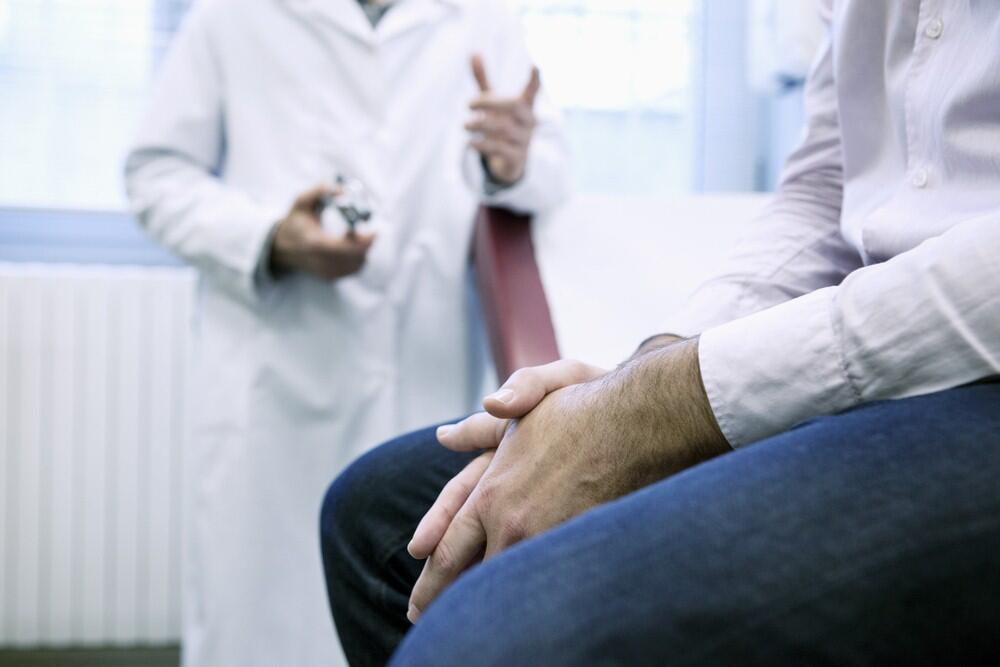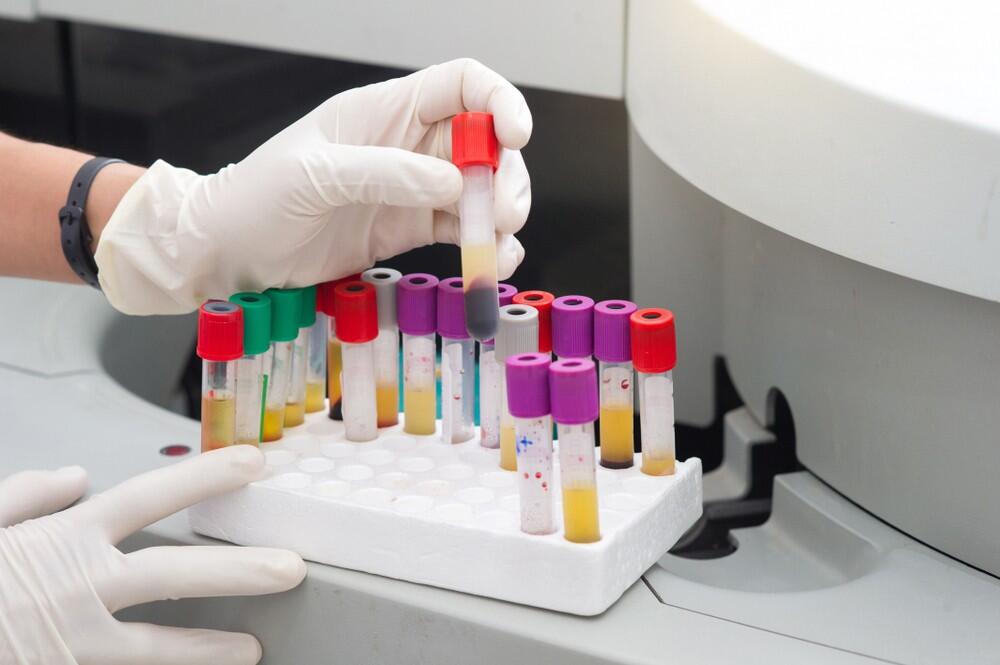Getting your Trinity Audio player ready...
In 1999, a group of men from Melbourne, Australia, set out with an interesting initiative - they decided to dedicate the month of November to growing a mustache, as a way to raise awareness of the topic of men’s health. This event was coined “Movember”, a creative combination of the words Mustache and name of the month.
More stories:
Over time, the initiative gained global recognition, and November is now recognized as Men's Health Awareness Month in many countries. Month. During this month, events are organized to promote awareness of health issues predominantly affecting men, such as prostate cancer, testicular cancer, as well as suicide and mental disorders.
A significant emphasis is placed on the promotion of early detection of diseases impacting men through routine screenings. However, the problem is there are currently no reliable tests for early detection of the diseases most associated with male physiology. What should one be aware of, and what can be done to reduce the risk of illness?
Prostate cancer
What it is: The prostate is a gland located close to the exit of the urinary bladder. Its function is to secrete prostate fluid, which mixes with the seminal fluids in males. Due to its proximity to the rectum it can be examined manually.
Prostate cancer is a tumor that originates from prostate cells, and the risk of developing it increases with age. At times there is a family history of the disease, but most people who develop prostate cancer have no family members with the condition.
Specific genes are associated with prostate cancer, and in families carrying these genes, it is recommended that males undergo genetic counseling to make informed decisions regarding monitoring and prevention.
Specific genes are known to be associated with prostate cancer, and in families carrying these genes, it is recommended that males undergo genetic counseling that will help them reach informed decisions regarding monitoring and prevention.
The incidence of prostate cancer in the U.S. is relatively high, but the mortality rate is very low, standing at around three percent of those diagnosed with this cancer.
What to test for and how: Prostate cancer predominantly affects males, and early detection presents significant challenges. Current tests can be invasive, causing discomfort and impacting quality of life, and are not consistently effective in detecting cancer at a stage when it can be effectively managed or prevented. Additionally, prostate cancer often develops slowly, diminishing the urgency for early detection in some cases. Nonetheless, rapid disease development can occur, leaving no opportunity for early detection.
As mentioned, the existing tests have limitations in their effectiveness. The first among them is the PSA test – a blood test to detect the presence of a protein called PSA, which is produced in the prostate and is often used as an indicator of prostate cell damage.
Initially, it was believed that PSA testing would be the key for early prostate cancer detection. However, subsequent research revealed that PSA levels are also elevated in a condition of an enlarged prostate (common in middle-aged men), or during simple prostate infections, or even after a prostate rectal examination.
And if this was not enough, there are documented cases of individuals with prostate cancer who did not display increased PSA levels. While in some cases, repeated PSA tests, adjusted for the individual's age, can improve the chances of early detection of prostate cancer, a study involving a significant number of subjects found that early detection did not significantly impact mortality rates. Consequently, there is currently no recommendation for PSA tests for early prostate cancer detection.
Another test is a rectal examination, which involves manual assessment, aiming to determine whether the prostate is enlarged and whether there are any suspicious lumps. However, similar to physical breast examination, rectal exams cannot definitively differentiate between malignant and benign tumors, necessitating further evaluation through biopsy.
In addition, a lump may be located in areas inaccessible to touch. A meta-analysis of rectal examinations found no substantial evidence supporting their efficacy in early prostate cancer detection.
Testicular cancer
What it is: The testicles are primarily responsible for producing semen and releasing it in response to stimulation. Additionally, they contain glands responsible for production of certain hormones, including the male sex hormone testosterone.
The testicles are located in a sac adjacent to the penis. Several types of cancers can develop in the testicles, and for most of these the chances of recovery are very high, often reaching up to 95 percent. The precise causes of testicular cancer remain are not fully understood, but genetic factors may contribute. It is considered a relatively rare type of cancer.
What to test for and how: Currently there is no effective standardized test for early detection of testicular cancer. However, since the testicles, unlike the prostate, are externally accessible, and their size allows for easier examination, regular examination of the testicles can help in early identification of any lumps, changes in size, or alterations in shape. It is recommended to promptly seek medical attention upon noticing any changes in the condition of the testicles, to facilitate early treatment, if necessary.
Routine health screenings for everyone
While there may not be effective routine screenings designed exclusively for men, various diseases pose risks for individuals of all genders, and it is important not to overlook these potential health concerns. Men’s Health Awareness Month serves as an excellent opportunity, regardless of gender, to schedule screenings that are appropriate for their age and health status.
Colorectal cancer
What it is: The colon, or large intestine, is a vital component of the digestive system, connecting the small intestine to the rectum. Its primary functions include nutrient and fluid absorption. Colorectal cancer refers to a group of tumors that develop within this section of the intestines.
The likelihood of developing this disease increases with age and is influenced by factors such as smoking, inflammatory bowel diseases, family history of colorectal cancer, and specific genetic factors.
Survival rates for colorectal cancer largely depend on the stage at which it is diagnosed, and early detection significantly improves the chances of full recovery.
What to test for and how: Colorectal cancer is a condition for which early screening methods have been developed, and effective treatments are available if detected in its early stages. Presently, two tests for early detection of colon cancer are most commonly used.
Fecal Occult Blood Test (FOBT): This method is straightforward and involves the detection of occult (hidden) blood in the stool. Cancerous tumors in the digestive system often cause bleeding, which can serve as an early indicator of the disease.
Individuals are instructed to collect small stool samples over three days and send them to a laboratory for analysis, where traces of bleeding are meticulously examined. If bleeding is detected, it’s imperative to seek immediate medical advice.
Fecal occult blood tests are typically recommended annually, typically commencing around age of 50. Nowadays, fecal occult blood testing commonly employs more sophisticated, antibody-based, which are considered significantly more sensitive.
Colonoscopy: an invasive procedure that employs a tiny camera to examine the inner walls of the colon. If a tumor is identified, it can be biopsied or removed for further analysis, which helps determine the need for surgery or other treatments.
The advantage of colonoscopy is in its ability to provide rapid and accurate information, enabling prompt treatment if any abnormalities are detected. The disadvantage is that it is an invasive test that is not risk free. In any case, it’s essential to consult a healthcare professional to discuss the recommended test.
An alternative to traditional colonoscopy is Virtual Colonoscopy: a CT scan of the abdomen that creates detailed images of the digestive system by imaging thin sections of the body to detect tumors.
The U.S. Preventive Services Task Force has included this test in its Final Recommendation Statement: Screening for Colorectal Cancer, as an alternative to the conventional colonoscopy. It's advisable to consult with a healthcare provider to determine the most appropriate screening method for each one’s individual needs.
Sexually transmitted diseases
What it is: While cancer is a significant concern, there are also diseases related to regular everyday activities, such as sexual intercourse.
Sexually transmitted diseases, as suggested by their name, are a group of diseases characterized by their ability to be transmitted through sexual contact. The risk of contracting them exists in all forms of sexual contact, but is particularly high in cases involving penetration without the use of a condom.
Virtually all sexually transmitted diseases are treatable when discovered at an early stage. We are fortunate to live in an era with antibiotics to combat bacterial infections and even preventive treatment for HIV, the virus that causes AIDS, available shortly after initial exposure. That is why regular testing and prompt treatment upon diagnosis are essential
What to test for and how: tests for sexually transmitted diseases are recommended for anyone who is sexually active, regardless of gender or sexual orientation. The frequency and type of tests vary based on the nature of the relationships, sexual activity, frequency of intercourse etc.
These tests include screening for chlamydia, gonorrhea, syphilis, HIV (AIDS), and sometimes hepatitis types A, B or C. The selection is influenced by the individual's age and vaccination history.
These tests serve not only to prevent disease transmission, but also to prevent possible complications. Untreated syphilis, for example, can cause harm to a person’s vision, brain and heart. Undiagnosed hepatitis can damage the liver and, in certain cases, can progress into liver cancer. It is recommended to discuss these tests with a healthcare provider or seek guidance at a clinic specializing in STDs.
Hypertension
What it is: Hypertension, or elevated blood pressure, is associated with an increased risk of heart attacks, strokes, kidney injury, and more. Approximately one in five individuals aged 18 and older is diagnosed with hypertension. These numbers rise with age, with nearly half of men over the age of 65 requiring treatment for hypertension.
What to test for and how: It is recommended that individuals over the age of 18 undergo blood pressure testing at least once every five years, and every year starting at the age of 40. The test involves a simple resting blood pressure measurement, typically conducted at a clinic or by a family doctor. The aim is to identify hypertension early, to start treatment as early as possible and to mitigate its long term risks.
Additional diseases
Health screening recommendations vary from person to person, making it essential to consult with a family doctor or relevant specialist before undergoing medical tests.
For instance, men with a family history of early-onset breast cancer may require genetic testing for detection of cancer-related genes. Similarly, individuals with a family predisposition to heart diseases at a young age may benefit from a cardiological evaluation.
Numerous and diverse screenings tailored to an individual's family history, lifestyle choices, such as smoking, sexual behavior, age and more. Personalizing general recommendations to suit an individual's specific needs is a key aspect of family medicine. Therefore, consulting with your family doctor about the recommended screenings for your age and health condition is crucial.








